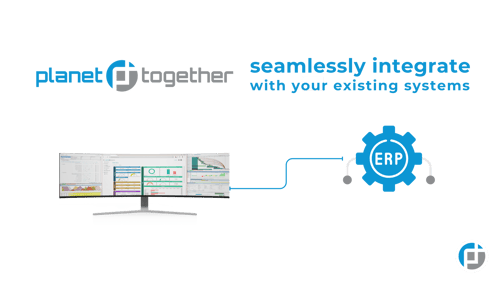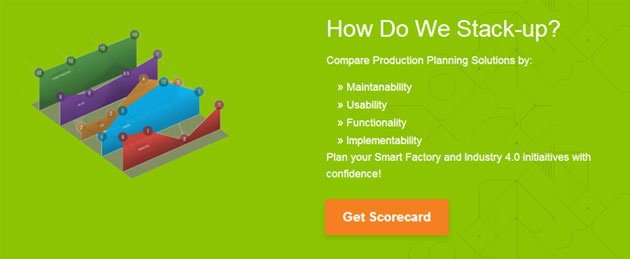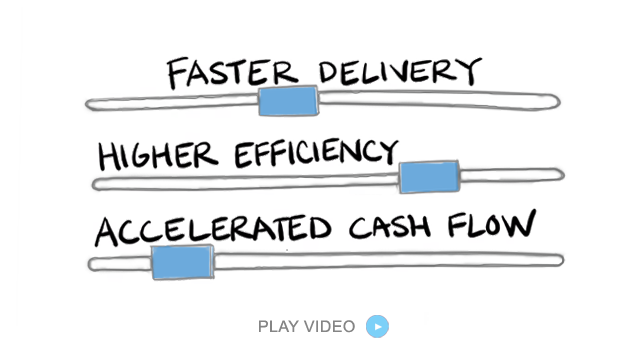Boosting Efficiency, Flexibility, and Responsiveness in Chemical Manufacturing with PlanetTogether and ERP Integration
In the world of chemical manufacturing, few roles are as complex—and as critical—as the Production Scheduler. The job demands not only technical precision but also real-time decision-making, continuous coordination, and the ability to adapt to constant shifts in supply, demand, and compliance requirements.
In the manufacturing environment, the three pillars of success for any scheduler are efficiency, flexibility, and responsiveness. Achieving all three, however, can feel like trying to balance on a chemical reaction—one wrong step, and the process can explode into delays, lost productivity, or costly compliance issues.
This is where advanced planning and scheduling (APS) solutions like PlanetTogether, especially when integrated with robust ERP and MES systems like SAP, Oracle, Microsoft Dynamics, Kinaxis, or Aveva, become game changers.
Let’s explore how this integration helps Production Schedulers in chemical manufacturing meet modern challenges and exceed expectations.
The Challenge of Scheduling in Chemical Manufacturing
Unlike discrete manufacturing, chemical manufacturing processes often involve:
Batch production with specific timing and sequencing
Variable yields
Strict regulatory compliance and documentation
Hazardous materials requiring special handling
Asset-intensive environments with tight maintenance schedules
Production schedulers are tasked with optimizing these processes in a way that maximizes throughput without violating safety, quality, or regulatory standards. And with market volatility, supply chain disruptions, and customer demand swings, traditional tools like spreadsheets or legacy systems fall far short.

The Modern Mandate: Efficiency, Flexibility, and Responsiveness
Efficiency: Doing More with Less
Efficiency in chemical manufacturing means getting the most out of limited resources—whether that’s equipment, labor, or raw materials. A single scheduling error can lead to wasted batches, production bottlenecks, or unplanned downtime.
PlanetTogether APS, when integrated with your ERP or MES system (e.g., SAP, Oracle, Microsoft Dynamics, Aveva, or Kinaxis), pulls in real-time data across your plant floor, inventory, and order pipeline. This enables:
Automated finite capacity scheduling
Optimized batch sequencing based on real-time constraints
Minimized changeovers and clean-in-place (CIP) cycles
Better synchronization with raw material availability
By aligning real-time plant capabilities with demand, schedulers can reduce idle time, eliminate overproduction, and streamline workflows.
Example: Integrating PlanetTogether with SAP allows a scheduler to automatically adjust production runs based on real-time inventory levels and sales orders, reducing excess inventory and improving throughput.
Flexibility: Adapting to Change Without Chaos
Chemical manufacturers are no strangers to last-minute changes—whether it's a rush order, a supplier delay, or a regulatory audit that forces you to reroute production.
With a traditional ERP alone, rescheduling these changes can take hours or even days. But when PlanetTogether is integrated into your ERP or MES ecosystem, changes are not only easier—they’re strategic.
Flexibility enabled through integration includes:
Drag-and-drop rescheduling with automated conflict detection
Visibility into downstream effects of any scheduling change
Scenario modeling and “what-if” analysis
Immediate updates pushed to SAP, Oracle, or Microsoft Dynamics for procurement and logistics alignment
Example: A scheduler using PlanetTogether integrated with Aveva MES can quickly shift a batch from Reactor 3 to Reactor 5 due to maintenance, while seeing how that shift affects the rest of the week’s production, labor availability, and material planning.
This means you can pivot faster—without compromising quality or safety.
Responsiveness: Real-Time Insight, Real-Time Action
Responsiveness is more than just reacting quickly; it’s about responding intelligently and proactively to dynamic conditions on the plant floor and in the supply chain.
PlanetTogether’s integration with platforms like Kinaxis or Microsoft Dynamics 365 offers real-time visibility that connects production planning with broader supply chain activities. This ensures:
Faster reaction to demand fluctuations
Immediate reallocation of resources in case of supply chain disruptions
Accurate delivery commitments based on live shop-floor data
Through bi-directional integration, production schedules in PlanetTogether can reflect changes from your ERP instantly—ensuring everyone from planners to procurement and sales is operating from the same source of truth.
Example: If Kinaxis flags a delay in a key ingredient shipment, PlanetTogether can immediately reschedule affected batches and prioritize others—while updating Microsoft Dynamics for order fulfillment planning.
Integration in Action: From Chaos to Control
Let’s say your facility operates with SAP for enterprise resource planning, and Aveva MES on the plant floor. You’ve recently implemented PlanetTogether for advanced scheduling.
Here’s how an integrated workflow might look:
SAP records a new set of customer orders and forecasts.
PlanetTogether pulls the order data and current inventory levels.
It checks equipment availability via Aveva MES and material constraints from SAP.
The scheduler uses PlanetTogether to create an optimized, feasible schedule.
If a utility issue or operator absence is detected in Aveva, PlanetTogether flags the conflict and suggests rescheduling.
The updated schedule is pushed back into SAP for real-time execution alignment.
All stakeholders—production, quality, procurement, and logistics—are notified of the change automatically.
This seamless interaction across systems helps Production Schedulers stay in control, even when the unexpected hits.

Why Integration Is the Key to Unlocking Scheduler Excellence
On their own, ERP and MES platforms are powerful. But when they’re integrated with an advanced scheduling engine like PlanetTogether, they become exponentially more valuable.
Here’s what integration unlocks:
| Feature | Without Integration | With PlanetTogether Integration |
|---|---|---|
| Schedule Creation | Manual, time-consuming | Automated, optimized in minutes |
| Schedule Changes | Reactive, high-risk | Proactive, constraint-aware |
| Data Visibility | Fragmented | Unified, real-time |
| Resource Utilization | Siloed | Holistic and efficient |
| Scenario Planning | Limited | Dynamic “what-if” modeling |
Chemical manufacturing is only going to grow more complex—with new formulations, tighter regulations, and increasing customer demands for faster turnaround and greater customization.
As a Production Scheduler, you need tools that do more than just track orders or create Gantt charts. You need a system that gives you a strategic edge, helps you plan with confidence, and lets you adapt with precision.
By integrating PlanetTogether with your ERP and MES stack, you gain more than just a scheduler—you gain a command center for production agility.
It’s time to move beyond firefighting and toward foresight.
Are you ready to take your manufacturing operations to the next level? Contact us today to learn more about how PlanetTogether can help you achieve your goals and drive success in your industry.
Topics: PlanetTogether Software, Integrating PlanetTogether, Chemical Manufacturing, Scenario Modeling & What-If Analysis, Automated Finite Capacity Scheduling, Drag-and-Drop Rescheduling, Faster Reaction to Demand Fluctuations





















LEAVE A COMMENT